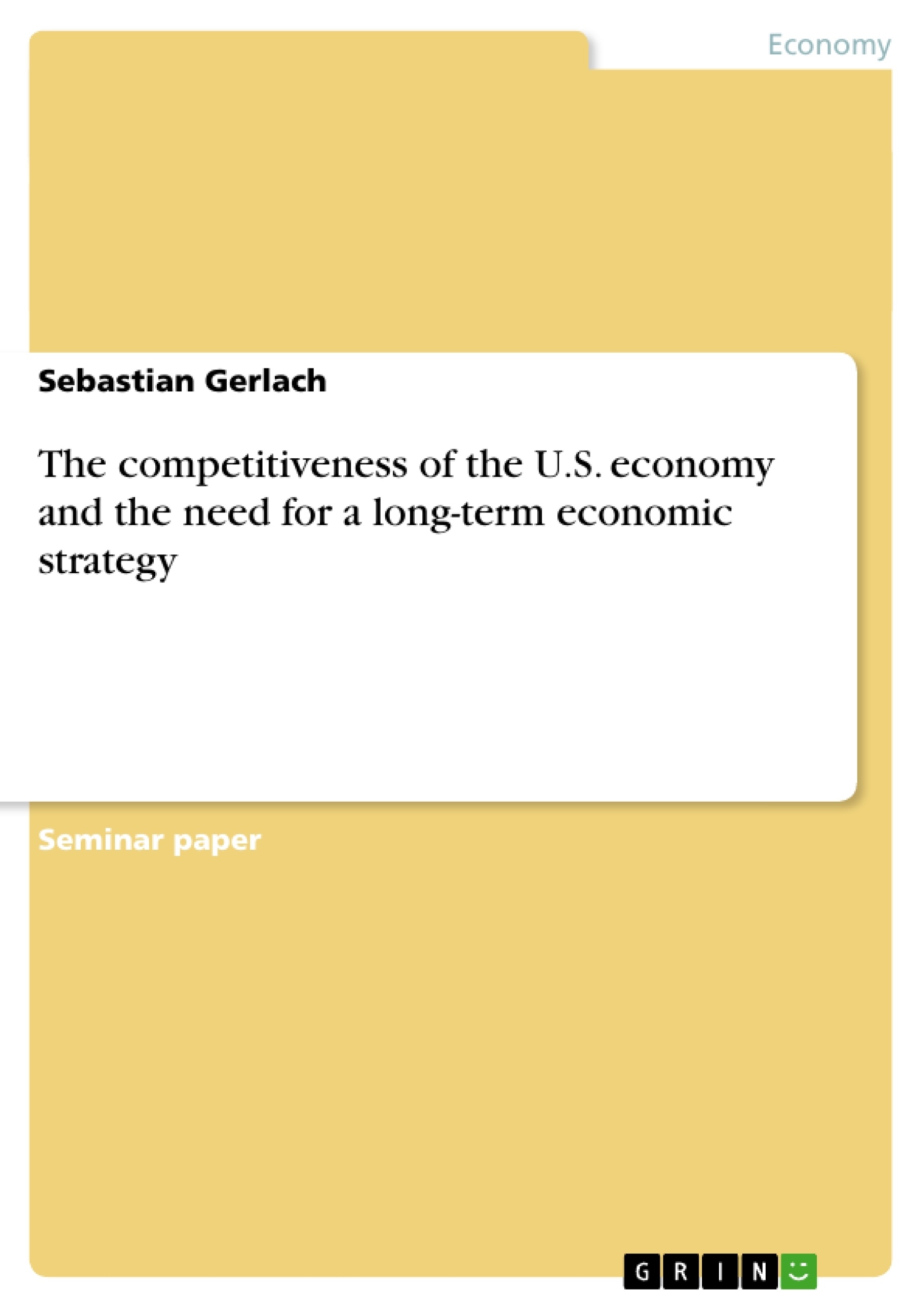Despite the actual recession and financial crisis, the USA is currently the most competitive economy in the world. Competitive strengths like innovation and business sophistication next to well-functioning markets keep the USA highly productive. They outweigh the competitive weaknesses of great macroeconomic imbalances and improvable institutions. The financial market is just a part of the whole picture. Although the global economic landscape changed dramatically, the rise of emerging markets like China pose no general threat to U.S. competitiveness, because it is not a zerosum game. But the superior competitive position is eroding. Forces from within the U.S. economy put the future U.S. competitiveness at great risk. Inconsistencies like a decreasing percentage of R&D-spending, the ignorance of regional industry clusters by the federal government, the low-quality education system, and ineffective regulation of markets, display piecemeal, uncoordinated policy decisions and the lack of a coherent economic strategy.
The formulation and implementation of a longterm economic strategy is recommended, which addresses these inconsistencies in the short- to midterm, the enforcement of strengths and reduction of weaknesses in the long-term. Only if the USA is governed strategically, it could sustain its current superior competitive position.
Inhaltsverzeichnis (Table of Contents)
- Executive Summary
- Introduction
- The Concept of National Competitiveness
- The Current State of U.S. Competitiveness
- Competitive Strengths of the U.S. Economy
- Competitive Weaknesses of the U.S. Economy
- An Outlook on the Future State of U.S. Competitiveness
- Policy Recommendations: A Long-Term Economic Strategy
Zielsetzung und Themenschwerpunkte (Objectives and Key Themes)
This report analyzes the competitiveness of the U.S. economy, focusing on its current standing and future prospects. It aims to identify key strengths and weaknesses, and ultimately, to recommend a long-term economic strategy to maintain U.S. economic leadership.
- Current competitive position of the USA
- Competitive strengths and weaknesses of the U.S. economy
- The impact of emerging economies on U.S. competitiveness
- The need for a long-term economic strategy
- Policy recommendations for improving U.S. competitiveness
Zusammenfassung der Kapitel (Chapter Summaries)
Executive Summary: This section provides a brief overview of the U.S.'s current competitive position, highlighting its strengths (innovation, sophisticated business) and weaknesses (macroeconomic imbalances, institutional issues). It concludes by emphasizing the need for a long-term economic strategy.
Introduction: The introduction addresses concerns about the long-term sustainability of the U.S.'s economic superpower status in light of the 2008 recession and the rise of emerging economies. It touches upon factors such as income inequality and the changing global economic landscape.
The Concept of National Competitiveness: [This section's content is not provided in the excerpt.]
The Current State of U.S. Competitiveness: This chapter will likely detail the specific competitive strengths and weaknesses of the U.S. economy, providing supporting data and analysis.
An Outlook on the Future State of U.S. Competitiveness: This chapter will analyze the future prospects of U.S. competitiveness, considering both internal and external factors, including the rise of emerging markets like China.
Policy Recommendations: A Long-Term Economic Strategy: [This section's content is not provided in the excerpt, but it will likely outline specific policy recommendations for addressing the identified weaknesses and sustaining the strengths of the U.S. economy.]
Schlüsselwörter (Keywords)
U.S. economy, national competitiveness, economic strategy, global competitiveness, macroeconomic imbalances, innovation, emerging markets, long-term economic growth, policy recommendations.
- Quote paper
- Sebastian Gerlach (Author), 2009, The competitiveness of the U.S. economy and the need for a long-term economic strategy, Munich, GRIN Verlag, https://www.grin.com/document/123982



